Envirolak Series for Cabinet Painting?
Rachel Garwood
last year
last modified: last year
Featured Answer
Sort by:Oldest
Comments (26)
elcieg
last yearawm03
last yearRelated Discussions
family farm series, autumn of 1900--picture
Comments (6)(Duh! it occurred to me that I should just cut and paste the narrative so it doesn't get separated, so here it is. Sorry for confusion.) This is the house that was torn down in 1922 in order to build the new brick-veneer bungalow. (Also please see my other picts, as well as the thread, "1922 farm house landscaping," for history.) Much of this old house was recycled into the new house, as we have seen in the plaster wall lathing, some structural wood, and the upstairs doors. Plus, I'm still finding foundation rocks and bricks and even parts of teacups as I work my "rainbow garden" soil (which see), that I located on the slope of the lower terrace that they built up by filling with sand and all manner of things. Not much time or money for landscape gardening back then. I'm sure they had their "garden," meaning the vegetable garden, and they also would have had fruit trees and bushes (not considered part of the garden), but if they wanted beauty, these people as they sit here would have been viewing their own time period's version of my present-day view from the porch (which see). The elderly lady in the rocker on the left is my great great grandmother; the 15-year-old boy on the far right is my grandfather. His parents are the couple in the chairs, and his three older sisters are shown with their children. (The great great g'mthr and her son, my great g'fthr, would die six years later, putting the responsibility of the farm onto my grandfather.) The picture was dated by deducing who the babe-in-arms on the porch was. These folks are Germans, by the way. A bough from the black pine can be seen on the left. The tree can be seen in other pictures in this series. My father said that my grandfather reported that the tree was always pretty much that same size all the years he was growing up. Once it gets to a certain height, it just flattens out on top and grows only wider and wider. (I've planted several more black pines in recent years scattered here and there--partly for sentimentality, and partly because white pines aren't an option with my penchant for planting different varieties of gooseberries, which are known in some regions to become co-hosts for white pine blister rust.) Egyptianonion...See MorePainting kitchen cabinets - need advice
Comments (4)Used correctly, FPE's Brushing-putty or Swedish-putty can give you a glass-like base. NOTE: FPE stresses that BP must be primed with Oil primer after it's dry/sanded/tacked-off. After the laborious prep., why wouldn't you want to put the "Ultimate Paint" on? * It's not that much more, and will add to your projects/homes value, not to mention the sheer beauty & enjoyment of it! * I'm absolutely in love with their Eurolux Matte I used in my downstairs bath! ONE coat...serious. I can firmly rub it, with NO trace of burnishing. * Their ECO-series paint would look awesome on your cabs! * BP link below, if you haven't already read it... Faron Here is a link that might be useful: FPE Brushing-Putty page......See MorePainting kitchen cabinets--oil vs latex--VOCs concern
Comments (15)I wouldn't focus "totally" on just the $$$... Think of the "Total $ value" added to the home, etc. >>> I think some people tend to think too "small box" when improving their homes, and get too concerned over the price of a single gallon of product. >>> Yet $$Thousands$$ are spent on furniture, tiles, etc., that can easily be "too trendy", and REDUCE a homes value! If another $100 (or whatever $ amount...) in paint adds "even more" to the worth....just sayin'.... The additional $$/sq. ft. soon become meaningless. Plus, a high-end finish like FPE wears VERY well too. However... CC is a very good finish. It's NOT Low-VOC however. Colors can be tedious to match into this line. The ACE Cabinet, Door, & Trim paint IS Low-VOC, looks very nice, easily tinted to ANY ACE color, and can be sold in all 50 states...CC cannot. ...gettin' off my soapbox now...;-) Faron...See MoreGE Cafe Series Matte White Finish?
Comments (543)[FYI: DELAYS on Cafe appliances are due to a chip shortage. It is not a problem with the GE/Cafe.] We have the Cafe white microwave and refigerator...LOVE THEM!!! (We are ordering the stove/oven soon. It will complete this space for sure!!) We ordered our refrigerator in March of 2021 and it arrived in March of 2022. Our microwave was in stock and was delivered and installed w/in a week. Our walls are SW Alabaster and our cupboards are SW Snow Bound. Our dishwasher is located in the island, which is painted Black, and we will also be ordering the black matte dishwasher....See MoreCindi Sullivan
last yearcatbuilder
last yearlast modified: last yearRCKsinks Inc.
last yearDebbie Downer
last yearlast modified: last yearUser
last yearlast modified: last yearDebbie Downer
last yearUser
last yearlast modified: last yearrwiegand
last yearRachel Garwood
last yearRachel Garwood
last yearlast modified: last yearUser
last yearlast modified: last yearRachel Garwood
last yearbry911
last yearbry911
last yearlast modified: last yearDebbie Downer
last yearlast modified: last yearbry911
last yearlast modified: last yearPassionate Home
last yearMichael Hardick
7 months ago
Related Stories
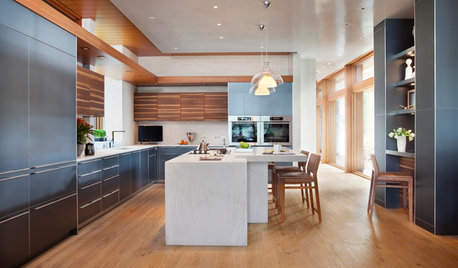
KITCHEN STORAGECabinets 101: How to Get the Storage You Want
Combine beauty and function in all of your cabinetry by keeping these basics in mind
Full Story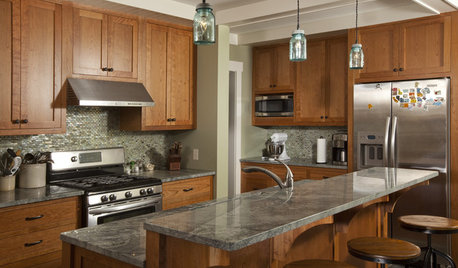
KITCHEN CABINETSCabinets 101: How to Choose Construction, Materials and Style
Do you want custom, semicustom or stock cabinets? Frameless or framed construction? We review the options
Full Story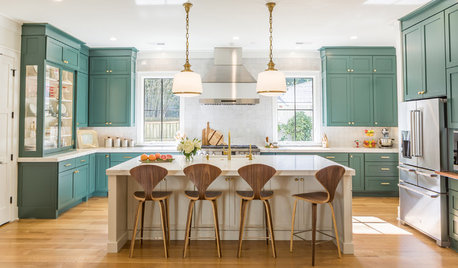
MOST POPULARIs This the Year Blue and Green Kitchen Cabinets Edge Out White?
Neutrals still dominate cabinet color. But some of the most popular recent kitchens on Houzz tell a different story
Full Story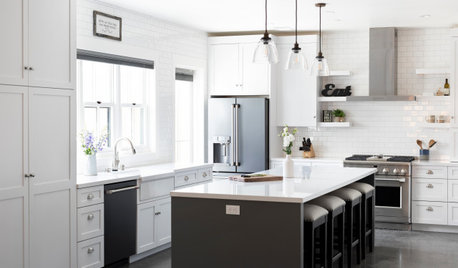
GREEN BUILDINGHow to Recycle Your Kitchen Cabinets
Check out these creative, environmentally friendly alternatives to tossing your cabinets in the dumpster
Full Story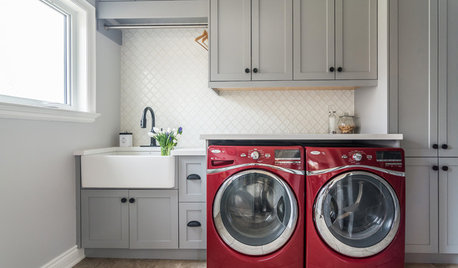
TRENDING NOWBlue, Green and Gray Cabinets Star in the Top New Laundry Rooms
White cabinets are still the most common choice in laundry rooms, but these trending photos tell a more colorful story
Full Story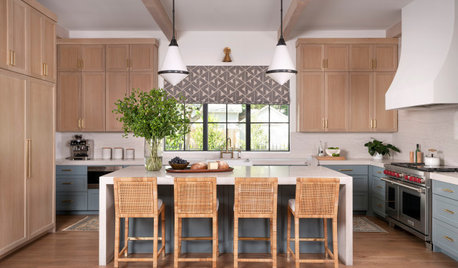
KITCHEN CABINETSPainted vs. Stained Kitchen Cabinets
Wondering whether to go for natural wood or a painted finish for your cabinets? These pros and cons can help
Full Story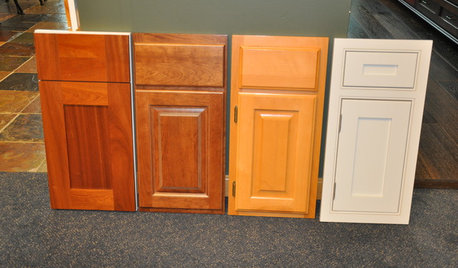
KITCHEN CABINETSLearn the Lingo of Kitchen Cabinet Door Styles
Understand door types, materials and cabinet face construction to make the right choice when you shop
Full Story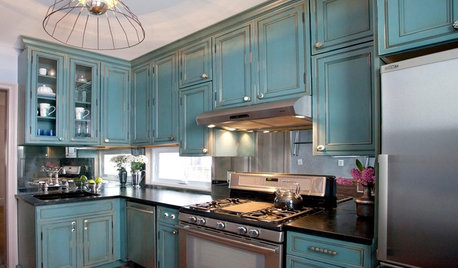
KITCHEN DESIGNKitchen of the Week: Turquoise Cabinets Snazz Up a Space-Savvy Eat-In
Color gives a row house kitchen panache, while a clever fold-up table offers flexibility
Full Story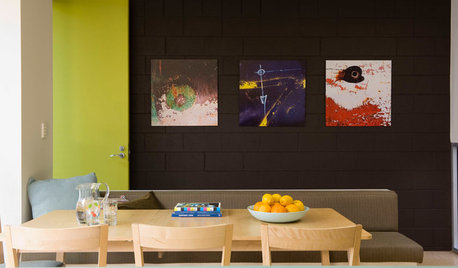
PAINTING10 Rules for Your Next Painting Project
Take your next painting journey from ‘argh!’ to ‘ta-da!’ with these designer tricks
Full Story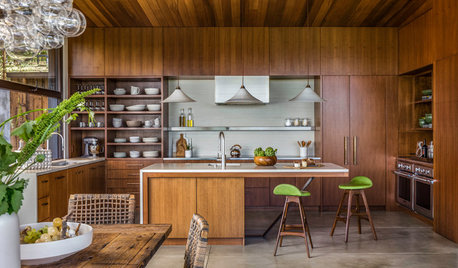
KITCHEN CABINETSNew This Week: 3 Knockout Kitchens With Natural Wood Cabinets
Whether light and breezy or rich and moody, these wood-rich kitchens might make you rethink painted cabinets
Full Story



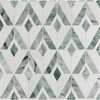
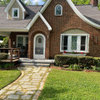
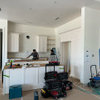
User